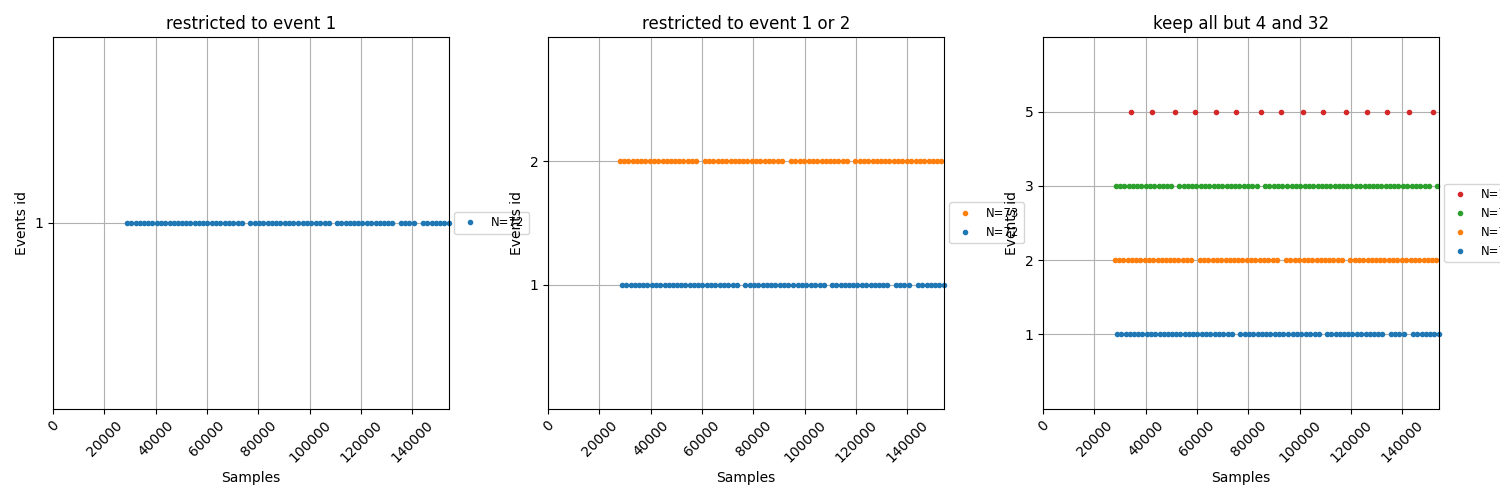Note
Click here to download the full example code
Reading an event file¶
Read events from a file. For a more detailed discussion of events in MNE-Python, see Parsing events from raw data and Working with events.
# Authors: Alexandre Gramfort <alexandre.gramfort@inria.fr>
# Chris Holdgraf <choldgraf@berkeley.edu>
#
# License: BSD (3-clause)
import matplotlib.pyplot as plt
import mne
from mne.datasets import sample
print(__doc__)
data_path = sample.data_path()
fname = data_path + '/MEG/sample/sample_audvis_raw-eve.fif'
Reading events¶
Below we’ll read in an events file. We suggest that this file end in
-eve.fif. Note that we can read in the entire events file, or only
events corresponding to particular event types with the include and
exclude parameters.
events_1 = mne.read_events(fname, include=1)
events_1_2 = mne.read_events(fname, include=[1, 2])
events_not_4_32 = mne.read_events(fname, exclude=[4, 32])
Events objects are essentially numpy arrays with three columns:
event_sample | previous_event_id | event_id
Out:
[[28771 0 1]
[30450 0 1]
[32101 0 1]
[33712 0 1]
[35428 0 1]]
---
[[27977 0 2]
[28771 0 1]
[29652 0 2]
[30450 0 1]
[31240 0 2]]
At sample 28771 stim channel went from 0 to 1
At sample 30450 stim channel went from 0 to 1
At sample 32101 stim channel went from 0 to 1
At sample 33712 stim channel went from 0 to 1
At sample 35428 stim channel went from 0 to 1
Plotting events¶
We can also plot events in order to visualize how events occur over the course of our recording session. Below we’ll plot our three event types to see which ones were included.
fig, axs = plt.subplots(1, 3, figsize=(15, 5))
mne.viz.plot_events(events_1, axes=axs[0], show=False)
axs[0].set(title="restricted to event 1")
mne.viz.plot_events(events_1_2, axes=axs[1], show=False)
axs[1].set(title="restricted to event 1 or 2")
mne.viz.plot_events(events_not_4_32, axes=axs[2], show=False)
axs[2].set(title="keep all but 4 and 32")
plt.setp([ax.get_xticklabels() for ax in axs], rotation=45)
plt.tight_layout()
plt.show()

Writing events¶
Finally, we can write events to disk. Remember to use the naming convention
-eve.fif for your file.
mne.write_events('example-eve.fif', events_1)
Total running time of the script: ( 0 minutes 1.562 seconds)
Estimated memory usage: 8 MB